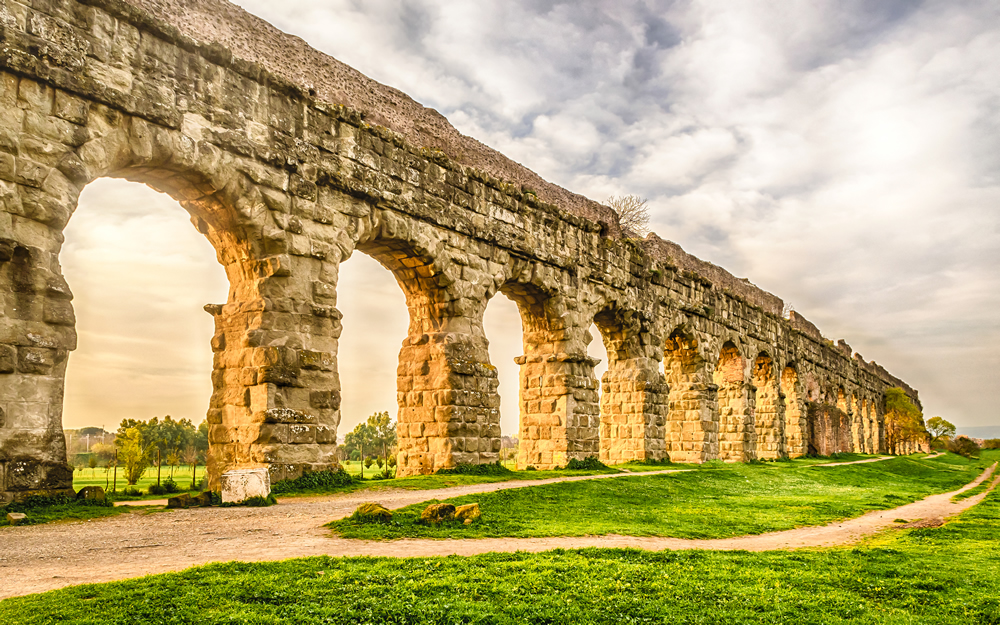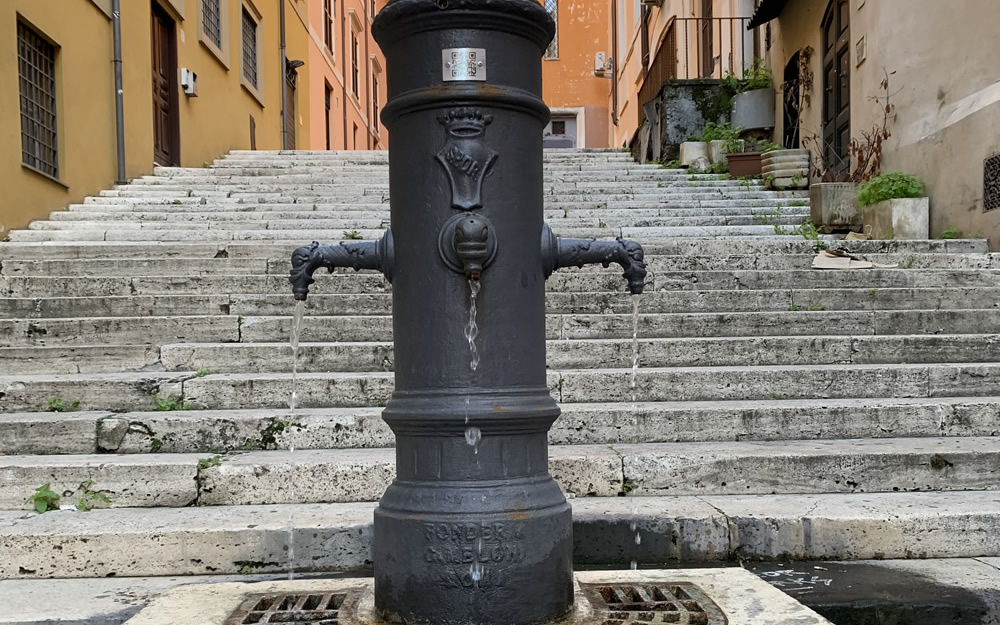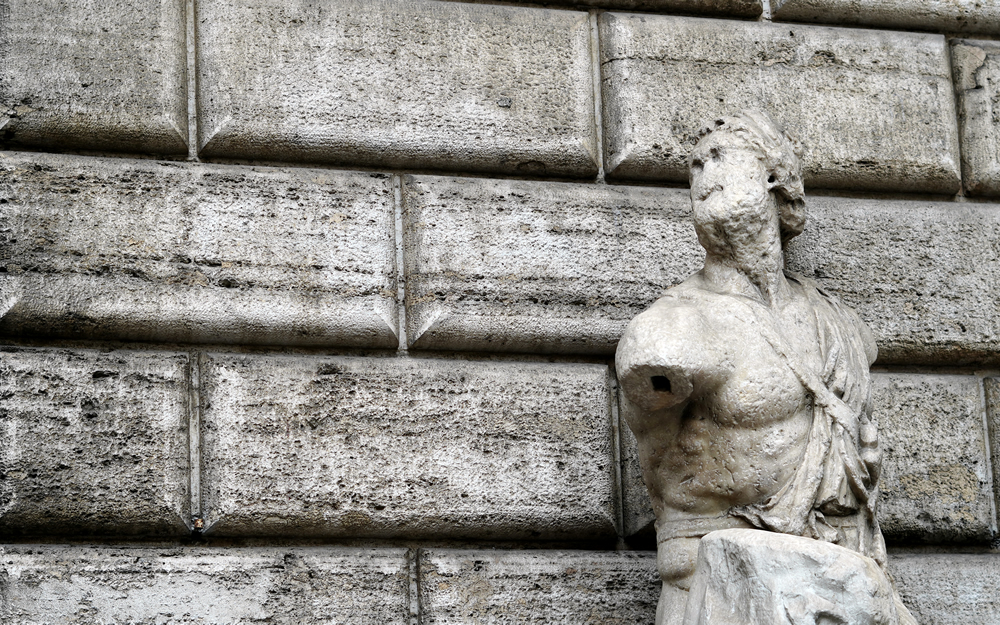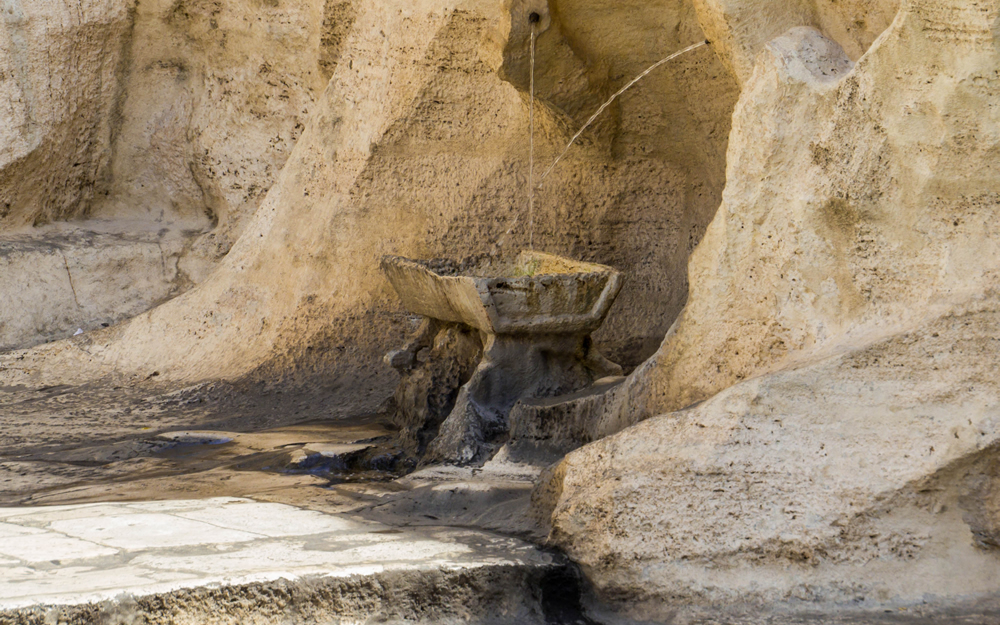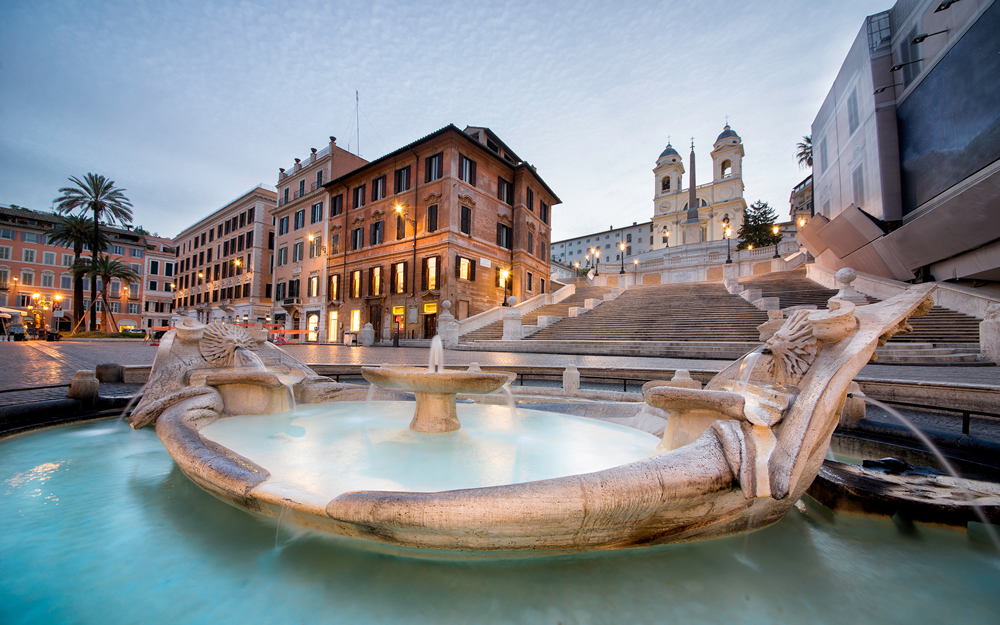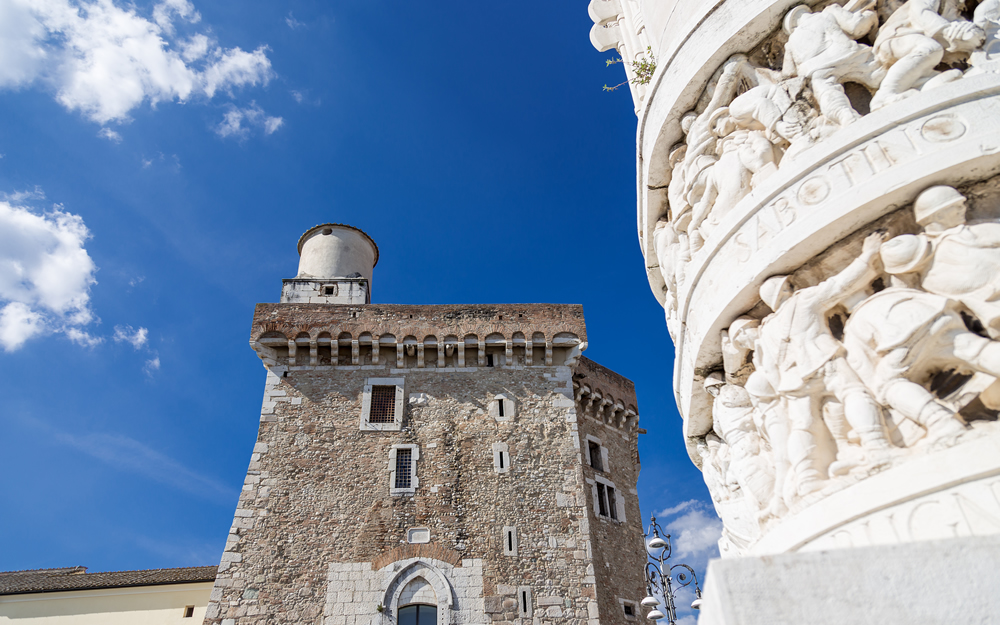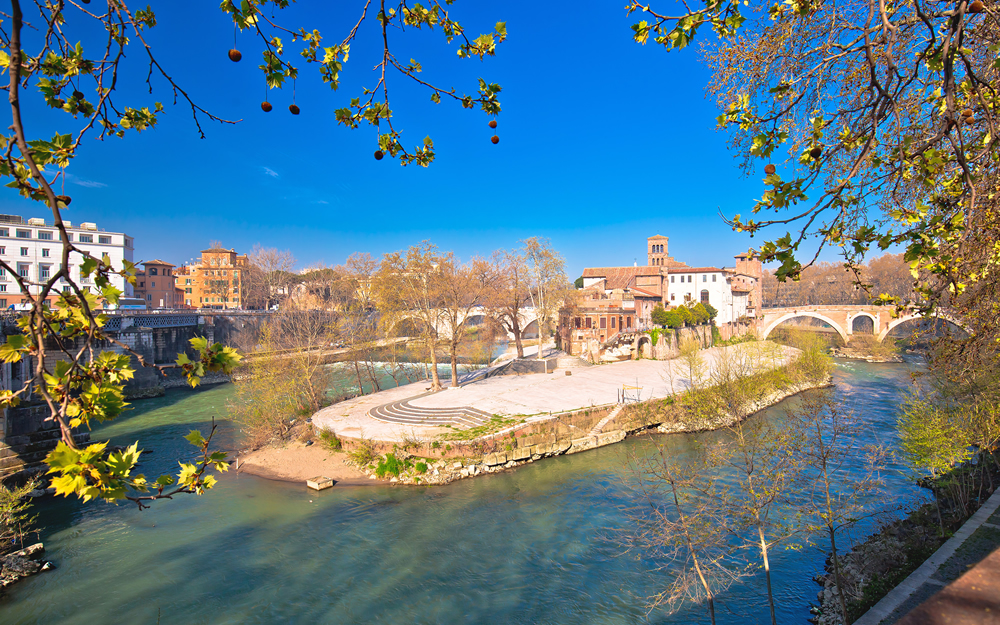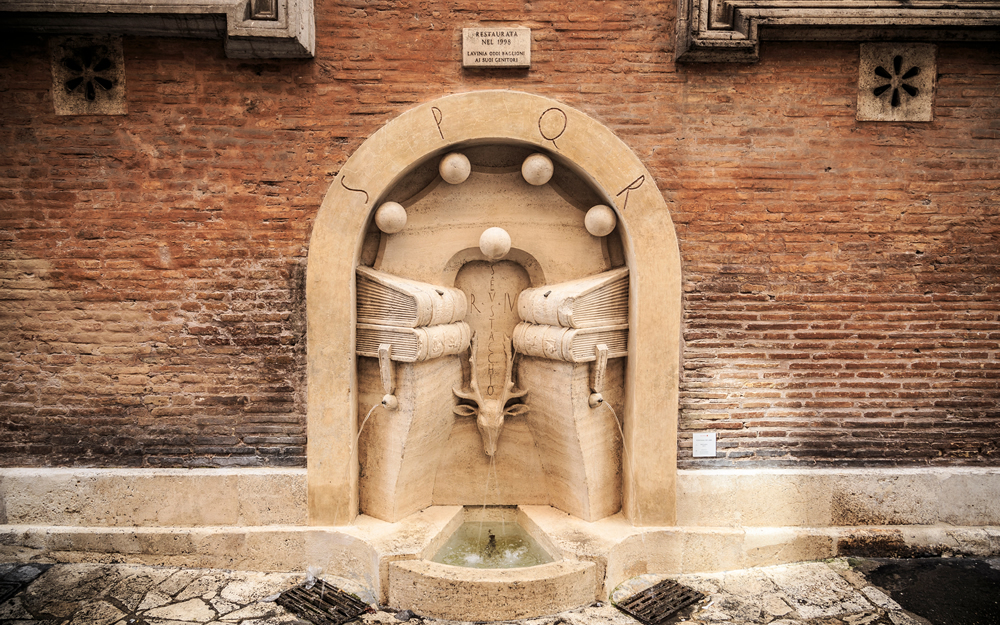- Home /
- Voice from the city /
- The Fontana dell'Acqua Paola: interesting facts about the Gianicolo fountain
The Fontana dell'Acqua Paola: interesting facts about the Gianicolo fountain
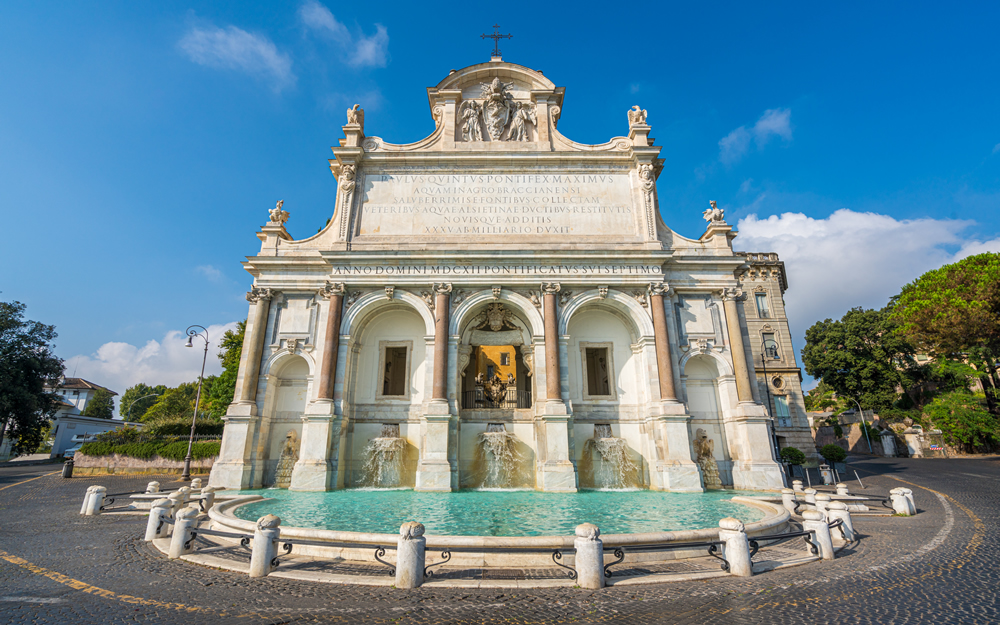
The Fontanone del Gianicolo, as it is also known, is one of the capital's most loved symbols. A popular destination for walks among tourists and Romans alike, the Acqua Paola Fountain stands on the Janiculum hill, in the heart of the Eternal City. Let's learn all about this picturesque fountain.
The Acqua Paola Fountain in all its beauty
The Janiculum is a Roman hill located between Trastevere and the Villa Pamphili area, that offers spectacular views. As you descend toward Via Garibaldi from the Janiculum viewpoint, the Acqua Paola Fountain appears almost out of nowhere, rising from a splendid terrace overlooking Rome which is even visible from the Tiber. It is at night however that the sight of the fountain becomes truly magical.
7 interesting facts about the Acqua Paola Fountain in Rome
The fountain's long history is full of interesting anecdotes. Let's learn about a few of them...
- Not many know that the Acqua Paola Fountain came into being as the terminal fountain for the Trajan aqueduct.
- The Fontanone was commissioned in the early 1600s by the newly elected Pope Paul V Borghese (whence the name) to supply the area on the right bank of the Tiber with water. At the time, the Borgo and Trastevere districts were poorly supplied with water: the Pope, in order to address this problem, advocated the restoration of the Trajan Aqueduct. To celebrate the completion of this work, which took place between 1608 and 1610, he then commissioned architects Giovanni Fontana and Flaminio Ponzio to build the monumental fountain we know today as the Fontanone.
- The Paola water fountain was completed in 1614, and marble coming from ancient monuments was also used in its construction.
- Its façade features six columns, no less than four of which come from the previous incarnation of St. Peter's Basilica, built under Emperor Constantine!
- You may have noticed a certain similarity with the Fontana dell'Acqua Felice which is located in Piazza San Bernardo. This is no mere coincidence: when designing the Acqua Paola Fountain, the architects Fontana and Ponzio took their inspiration from the Fontana dell'Acqua Felice, which, in turn, had previously been inspired by the Arc de Triomphe.
- Today, the fountain features a single large basin. But it wasn’t always this way. Indeed, it originally consisted of five smaller basins positioned in line with the arches. In 1690 Pope Alexander VIII commissioned Carlo Fontana - grandson of architect Giovanni - to design the new project, which included an extension of the terrace, delivering the iconic square to Rome.
- Did you notice a dragon and an eagle at the top? These symbols feature in the coat of arms belonging to the family of the commissioning client, Paul V: the Borghese.
- The basin is still surrounded by columns and iron bars, but their function is linked to times past, when they served to prevent the horses from stopping to drink.
- Did you know that the Acqua Paola Fountain was the protagonist of a saying? In fact, the Trastevere Romans coined the saying "worth as much as Acqua Paola" to mean something of little value. This was because Paola water itself, which came from Lake Bracciano, was not considered to be of high quality.
- Not everyone is aware that behind the Paola Fountain is hidden a garden, which is possible to visit. It is accessed through a flight of steps and from here you can enjoy a beautiful view of the city.
ACTION! at the Fontanone del Gianicolo
The fountain of Antonello Venditti's well-loved song, "Roma Capoccia", is in fact none other than the Acqua Paola Fountain in Rome, immortalised in the famous line "quanno la luna se specchia dentro ar fontanone" ("when the moon looks at her reflection in the fountain"). But certainly, this is not the only time it has been cited.
In fact, its evocative location has also inspired Italian cinema many times: among the many films that have exploited the beauty and evocative power of the Fontanone we find films such as Three Coins in the Fountain, The Cardinal, Trastevere, Sex with a smile, Delitti e profumi, In the name of the Sovereign People, Tonight at Alice's and the Oscar winner La Grande Bellezza.
Even international productions have not been indifferent to the fountain that stands on the Janiculum Hill: even James Bond passed through here in the film Spectre. /p>
Want to know more about Rome's other cinematic fountains? Find them all on Acea Waidy Wow!



